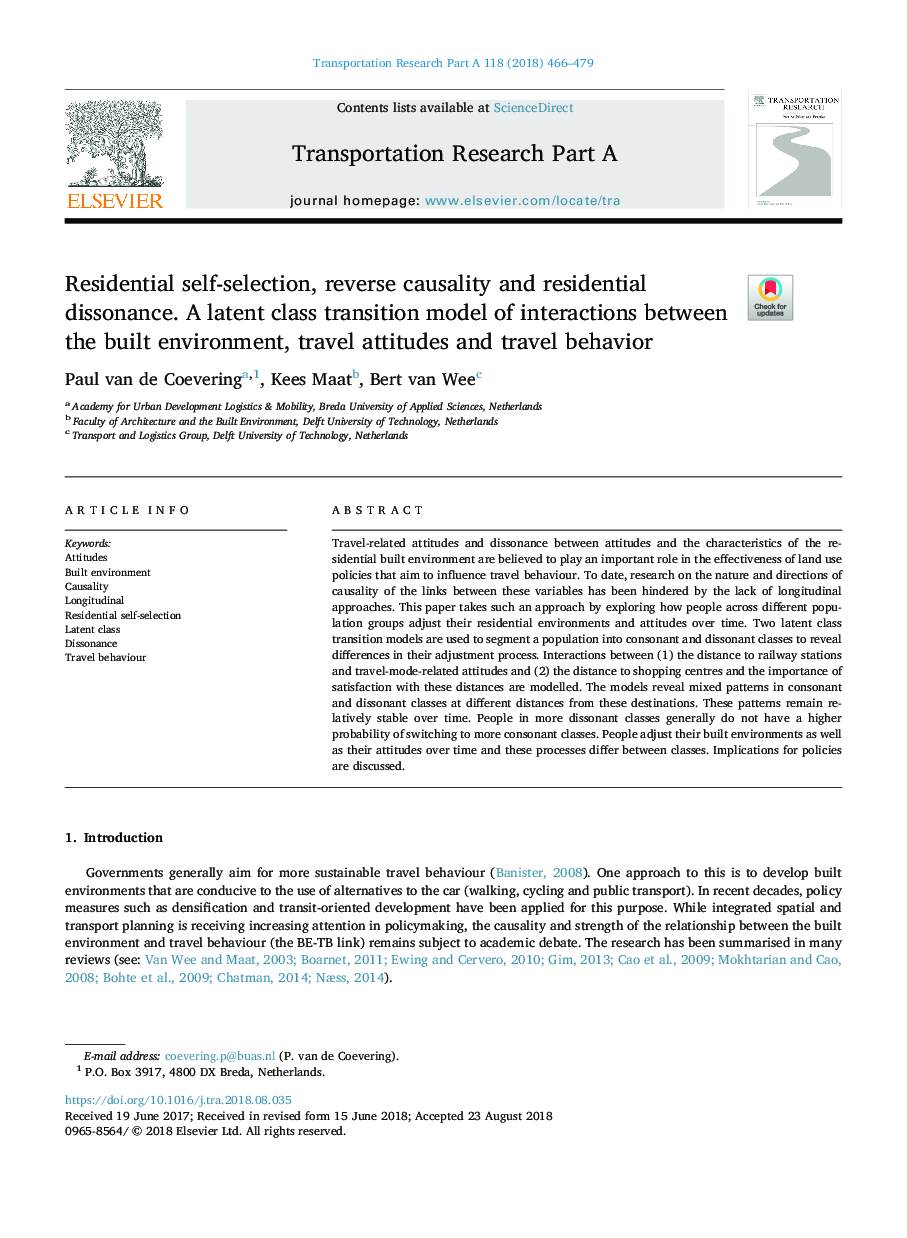| Article ID | Journal | Published Year | Pages | File Type |
|---|---|---|---|---|
| 11030179 | Transportation Research Part A: Policy and Practice | 2018 | 14 Pages |
Abstract
Travel-related attitudes and dissonance between attitudes and the characteristics of the residential built environment are believed to play an important role in the effectiveness of land use policies that aim to influence travel behaviour. To date, research on the nature and directions of causality of the links between these variables has been hindered by the lack of longitudinal approaches. This paper takes such an approach by exploring how people across different population groups adjust their residential environments and attitudes over time. Two latent class transition models are used to segment a population into consonant and dissonant classes to reveal differences in their adjustment process. Interactions between (1) the distance to railway stations and travel-mode-related attitudes and (2) the distance to shopping centres and the importance of satisfaction with these distances are modelled. The models reveal mixed patterns in consonant and dissonant classes at different distances from these destinations. These patterns remain relatively stable over time. People in more dissonant classes generally do not have a higher probability of switching to more consonant classes. People adjust their built environments as well as their attitudes over time and these processes differ between classes. Implications for policies are discussed.
Keywords
Related Topics
Physical Sciences and Engineering
Engineering
Civil and Structural Engineering
Authors
Paul van de Coevering, Kees Maat, Bert van Wee,
